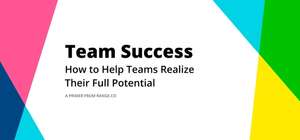
The typical enterprise uses over 500 apps, as noted at Citrix’s Synergy conference these last two years. Beyond simply the app ecosystem, consider how many different workplace tools there are for project management alone. Some of the big names that jump out include:
- G-Suite
- Microsoft Teams
- Trello
- Asana
- Workfront
- Jira
- Hive
- Smartsheet
- Wrike
- Zoho
Wait, we use how many apps at work?
And the list goes on and on.
Many companies, even mid-size and smaller ones, will attempt to combine various tools for different reasons. It makes sense, as Oki Doki has noted: you might love Asana for, say, time-sensitive tasks. But then you bring in Trello for long-term percolation. Meanwhile, important sales docs are in G-Suite, and your developers are primarily organizing their workflows in Jira, which other teams will need to interact with. One silo is using Wrike and another might have a series of Excel documents they email around.
We’re not even into communication tools like Slack yet, and already it can feel like the proliferation of these platforms is becoming too much for an average employee to even try and manage.
Here’s what to look for in a new tool for your team
Let’s try to think about this somewhat strategically. In most offices, the day-to-day tasks, the time-sensitive work, and the deadlines do matter incredibly. It’s often what most offices are managed around. So you absolutely would need a tool that reflects deadlines, pace of work, and allows you to tackle urgency. That can’t be avoided.
At the same time, a task-driven focus can—and often does—derail the bigger picture of work, pushing strategy into essentially a vacuum or black hole. This seriously hurts the long-term possibilities of your business.
This is the essential yin and yang of designing how work flows. There needs to be a focus on the immediate and a focus on the longer-term. You need a place for both initial reactions and developing or delayed responses. But what is that tool, and how do you begin to determine if it’s what your team needs?
Here’s a list of benefits you should consider when looking to implement new planning, productivity, and project management tools on your team:
- Allows for focus on the big picture
- Surfaces all work happening
- Gives line of sight into what everyone is working on
- Is easy to use
- Is enjoyable or even fun to use
- Provides demonstrable value in the form of productivity, alignment, awareness, or efficiency of completing work
- Offers one or two elements that are slightly different than the competition and seem valuable to how you work
No tool can directly prioritize and plan for you unless you’ve built the brain of every team member directly into the tool, and workplace technology isn’t quite there yet. You need tools that help you understand the flow of work, both short-term and long-term, and provide visibility into the various activities going on beyond simply your functional area. That’s where the value lies. But it’s not necessarily ever going to be one tool that rules them all.
That thing only 8% of leaders do well
Often, a group of executives and senior leaders go on an offsite or retreat. They meet for 3-4 days, come back, take a week or two to organize their thoughts, and then roll out a new strategy to the business. (This periodically happens at mid-size companies and sometimes happens at small ones, although in different forms.)
Now the strategy has been defined, but what of the execution? When the rest of the company is informed of the new strategy, they are left wondering what to do with the series of day-to-day tasks they were already working on. Should they still prioritize those, or do they need new tasks in the wake of a new strategy? These questions are rarely answered directly. It’s no wonder that research has found that only about 8% of leaders are good at aligning strategy and execution. That’s a preposterously low number.
Without alignment between the bigger picture (strategy) and the day-to-day work (execution), numerous other problems arise. In 2016, one consultancy worked with a multi-billion dollar tech firm and found that 7 in 10 employees were “working on tasks of essentially no value” most of the week. Again, this stat seems mind-boggling but is more common than we admit.
The goal: Developing the right operational cadence for your team
Admittedly, it’s never “the right time” to introduce new software to a team. But you can do your research, use some of the bullet points above, and look for tools that help you develop good habits and routines.
Ultimately, the game here is all about time. Science has shown us for decades that 55 hours of work per week is a hard ceiling on productivity. What are you going to do in order to maximize that 40-55 hour period?
What you’re trying to do is establish what we call an “operational cadence.” That’s a mix of nailing process, understanding communication, and developing healthy habits around how work flows through your organization. Humans are tool users; we have been since the dawn of time. It’s not a chisel in many professions circa 2019. It’s much more likely to be software. That’s a big change, but the core of the equation hasn’t changed: We want tools that make our lives easier, more time-effective, and more productive. Productivity tools and project management tools, just like prehistoric hammers, need to be in the service of the same ideas.
So, the next time you’re pitched “Come out for one tool to rule them all”—Integrations galore! Works for any size business! Does it all!—be skeptical. Tools that promise the moon typically don’t deliver. Instead, look for tools that will help your team develop the operational cadence you seek, tools that make work more enjoyable, and tools that empower everyone to work smarter.








